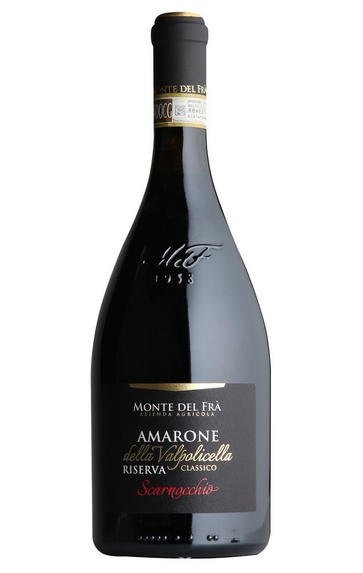
2017 Amarone Classico, Scarnocchio, Riserva, Monte del Frà, Veneto, Italy
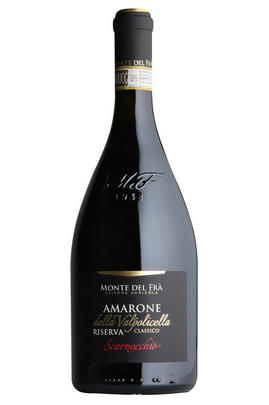
Critics reviews
Another strike for elegance, despite the massive power and thrust and body that Amarone delivers. This cherry-liqueur-scented wine with its lusciously lavish rococo curls of toasted coconut cream and dark chocolate and bourbon-like spices and maple-syrup smokiness should be, to all intents and purposes, thick and hot and heavy and hard – as so many Amarone are.
Instead, it comes with staggering fragrance and balance, every component beautifully harmonious and melded. Panther-like in its supple, fluid, sinuous grace. The sweetness-and-oak complexity of a port with the finesse of burgundy. I don't know of any other Amarone producer who is achieving this.
The freshness (that classic blood-orange note – cool, citrus-lifted, raspberry sharp, zested sweet-bitterness) that seems to define all these Monte del Frà reds persists, even in a 15.5% wine with plenty of oak.
Drink 2022 - 2032
Jancis Robinson MW, JancisRobinson.com (March 2022)
This has a raisiny nose, with aromas of dried cherries, dark plums, chocolate and dry earth. Hints of spices, hibiscus and dried herbs, too. Medium-to full-bodied with firm tannins and vivid acidity. Tight and muscular. Intense flavors and a lingering finish. Better to give it a year or two, to integrate the oak and soften the tannins.
Best from 2024
James Suckling, JamesSuckling.com (August 2022)
About this WINE
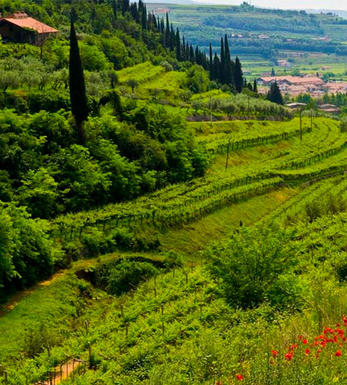
Monte del Fra
Monte del Frà translates as ;Hill of Monks; and is located in the heart of the Bianco di Custoza DOC. It now consists of over 65 hectares of vineyards is owned and run by brothers Eligio and Claudio Bonomo. It is one of the most progressive and dynamic producers in the region and has been particularly innovative in its adoption of modern viticultural techniques.
Eligio Bonomo was the first producer in the region to retrain the traditionally 1.6m high cordon vines to lower-trained, single guyot systems. In the winery the Bonomos use thoroughly modern, clean and temperature-controlled fermentation and storage facilities in order to preserve the aromatic freshness in their wines. They produce very good-quality wines which are clean, display excellent purity of fruit and are elegant and well balanced.
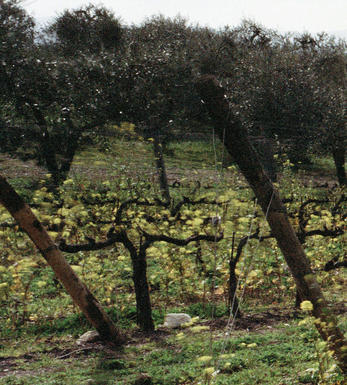
Amarone della Valpolicella
Amarone della Valpollicella, a leading Venetian wine DOC, now represents 25% of the total production of Valpolicella wine. Amarone della Valpolicella (normally known more snappily as "Amarone") is made using partially shrivelled fruit that has been left to dry, and produces a rich, full-bodied, unfortified, dry red wine.
Amarone's sweeter sibling Recioto della Valpolicella can trace its history back to the Romans, when Pliny, Virgil and Columella made reference to a wine called "Recitium", however, Amarone was not seen until it was first sold in 1936 and was only officially recognised in 1953. Its birth was apparently the result of a producer forgetting to take his Recioto out of barrel, allowing it to ferment to dryness.
Located between Lake Garda and Venice, the Amarone zone is concentrated around the villages of Negrar, Fumane, Marano, Sant Ambroglio and San Pietro-in-Cariano. Its vines grow on stony, volcanic, calcareous sites in the foothills of the Lessini Mountains at between 150m and 350m above sea level. With Lake Garda and the Adriatic Sea nearby, the region's climate is relatively temperate although the proximity of the Alps brings with it the constant threat of hail (as occurred in 2007).
Corvina (aka Veronese) and Corvinone must constitute 80% of the blend, with Rondinella, Molinara and Croatina accounting for the remaining 20%. Once harvested, the clean fruit is traditionally dried in airy lofts for 100-120 days over the winter, a process known as "appassimento". This typically results in an increase of sugar by 27% and dry extract by 28% while malic acid levels reduce by 66% with tartaric acid levels remaining the same. Importantly, evaporation leads to a 65% reduction in must weight (although this is less in modern purpose-built "lofts") aided and abetted by the development of noble rot (aka "botrytis cinerea"). The desiccated fruit is pressed in the March following the October harvest and fermented in Slavonian or French oak.
It is then aged for up to 7 years (as is the case for the wines of Giuseppe Quintarelli). The left-over grape pomace is recycled, with Valpolicella Classicopassed through it to produce Valpolicella Ripasso. The legal minimum alcohol level for Amarone is 14% but most easily surpass 15%. The best wines are dense and richly textured - reminiscent of Vintage Port but drier and without the fortification! - with lively acidity, supple tannins and lovely flavours of Morello cherry, roast coffee and chocolate.
Recommended producers: Bussola, Corte Sant' Alda, Dal Forno and Giuseppe Quintarelli.
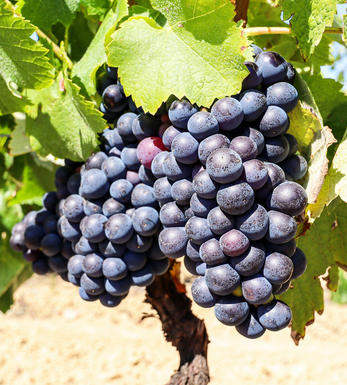
Corvina, Corvinone blend
Corvina is widely grown on the Veneto shore of Lake Garda and the hills of Valpolicella to the north and north-east of Verona. Sometimes known as Corvina Veronese, it is blended with Rondinella and Molinara to produce Valpolicella and Bardolino. It can be a tricky grape to cultivate, as it ripens late and is prone to rot if affected by rains at harvest time. It is a high-yielding grape and quality is very dependent on keeping yields low.
Corvina-based red wines can range in style from a light, cherryish red to the rich, port-like Recioto and Amarone Valpolicellas. Most Valpolicella from the plains is pale and insipid, and bears little comparison with Valpolicella Classico from the hills. Some producers such as Allegrini are now producing very high quality 100% Corvina wines.


Buying options
Add to wishlist
Description
Another strike for elegance, despite the massive power and thrust and body that Amarone delivers. This cherry-liqueur-scented wine with its lusciously lavish rococo curls of toasted coconut cream and dark chocolate and bourbon-like spices and maple-syrup smokiness should be, to all intents and purposes, thick and hot and heavy and hard – as so many Amarone are.
Instead, it comes with staggering fragrance and balance, every component beautifully harmonious and melded. Panther-like in its supple, fluid, sinuous grace. The sweetness-and-oak complexity of a port with the finesse of burgundy. I don't know of any other Amarone producer who is achieving this.
The freshness (that classic blood-orange note – cool, citrus-lifted, raspberry sharp, zested sweet-bitterness) that seems to define all these Monte del Frà reds persists, even in a 15.5% wine with plenty of oak.
Drink 2022 - 2032
Jancis Robinson MW, JancisRobinson.com (March 2022)
wine at a glance
Delivery and quality guarantee